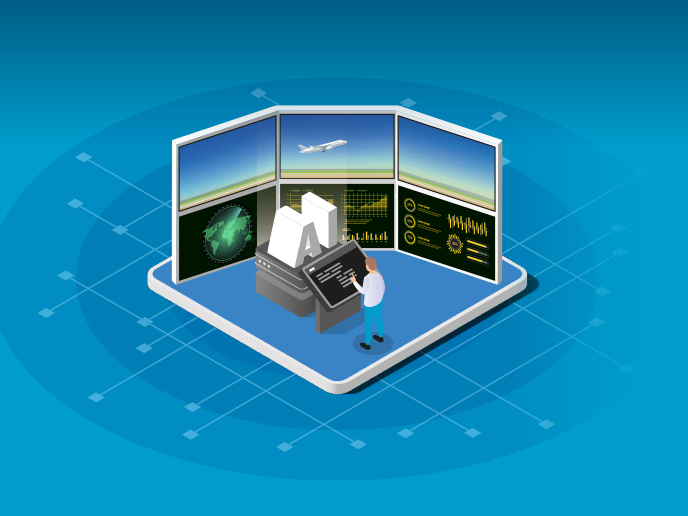IV - Trustworthy AI gives remote digital towers a boost
Transforming opaque ‘black-box’ remote digital tower systems into transparent user-centric ‘white-box’ systems makes AI understandable, useful and empowering.
Mobyen Uddin Ahmed, TRUSTY project coordinator
Using cameras and sensors, remote digital towers (RDTs) can centralise air traffic management operations to increase efficiency and safety, while reducing costs. However, most RDTs rely on artificial intelligence (AI) functionality which, alongside being technically complex to integrate, must be trusted by human operators. The TRUSTY(opens in new window) project – supported by SESAR JU(opens in new window) – is developing adaptive RDT systems to enhance human-machine interaction. “Transforming opaque ‘black-box’ RDT systems into transparent user-centric ‘white-box’ systems makes AI understandable, useful and empowering,” explains project coordinator Mobyen Uddin Ahmed, a professor in the Artificial Intelligence and Intelligent Systems group at project host Mälardalen University(opens in new window). TRUSTY has integrated AI into two air traffic control scenarios. The YOLO-World(opens in new window) deep-learning model complements video monitoring technology to detect objects on runways and taxiways, reducing delays, fuel consumption and emissions. Audio-to-text transcription is used for critical situation management. The system monitors pilot communications, interpreting them using semantic interpretation tools, such as Word2Vec(opens in new window), enabling the system to issue danger alerts.
From the runway to the road
“Regardless of technical efficiency, these tools only work if they are trusted, so we are adopting several explainable AI and human-AI teaming techniques,” adds Shahina Begum, project researcher and deputy leader of the Artificial Intelligence and Intelligent Systems group. Interactive dashboards display real-time data, such as aircraft trajectories, while data storytelling narrates the factors that lead to AI predictions. Field tests with professional and student air traffic managers have already been carried out at project partner ENAC(opens in new window)’s facilities in France. Simulated operational scenarios have tested the AI’s ability to handle complex situations, alongside usability testing to ensure user-friendliness. The team is also now conducting impact and scalability assessments to evaluate how the system performs across different airport settings. While TRUSTY’s explainable AI components and human-centric design address growing demand for–and concerns over–automated systems(opens in new window), especially in safety-critical sectors such as aviation, roll-out will likely be phased, beginning with smaller airports and expanding to larger hubs as the system matures. “Longer-term, the system could be integrated into multimodal coordination systems, optimising air, rail and road traffic flow, offering more connected, intelligent transport ecosystems,” concludes Begum.



